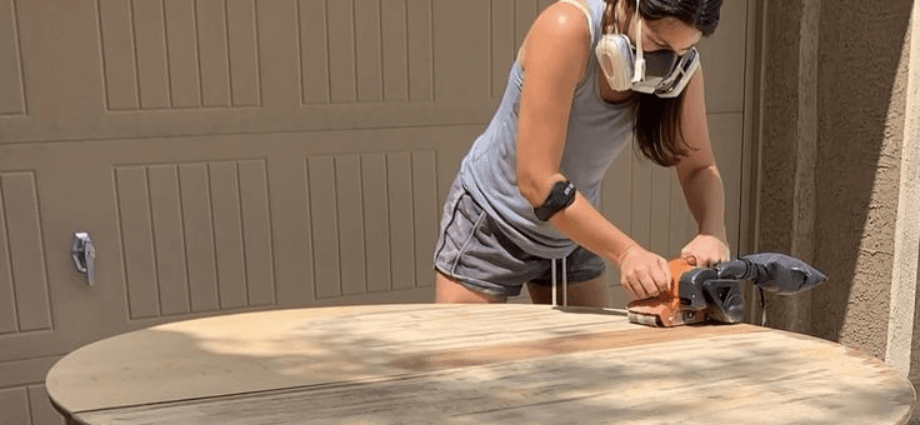Furniture can break or wear down over time, but many repairs can be done yourself with basic tools. DIY repairs save money and extend the life of your furniture. This guide covers common furniture repairs that you can do with simple steps and supplies.
Assessing the Damage

Before you begin any repair work, it’s crucial to assess the damage properly. Understanding what needs fixing will guide your next steps and determine whether you need to seek additional materials or tools. A proper assessment helps you avoid unnecessary repairs and ensures that you use the right tools, which can prevent further damage.
When inspecting your furniture, look for cracks, loose joints, or broken parts. Often, the damage is easy to identify, but sometimes it’s hidden. For example, a wobbly chair may have loose screws, or a cracked tabletop may only show slight surface damage. Identifying the problem early will help you decide what approach to take. In some cases, like loose screws or joints, a simple DIY fix is sufficient. However, more significant structural issues may require more specialized skills or the help of a professional.
Identifying the Type of Damage
Start by identifying what type of damage you are dealing with. Common issues include cracks, loose joints, broken parts, or missing hardware. Knowing the exact problem helps you choose the right method for fixing it. For instance, a small crack may need wood filler, while loose joints may just require a bit of glue and tightening. Broken parts or missing hardware can often be replaced with standard components from a hardware store.
Determining if the Repair is DIY-Friendly
Once you’ve identified the type of damage, determine if the repair is something you can do yourself. Some minor issues, like fixing a loose chair leg or filling a small crack, are simple enough for most people. However, structural repairs, like fixing broken furniture frames or restoring antique pieces, may require professional assistance. If you’re unsure, it’s always better to consult someone with experience, especially when dealing with valuable or delicate furniture.
Tools and Materials You’ll Need
Having the right tools is key to making a successful repair. For most common repairs, a few basic tools will suffice, but for specific repairs, you may need additional materials. The essential tools you’ll need for most DIY furniture repairs include a hammer, screwdriver, pliers, wood glue, and clamps. These tools are often sufficient for fixing loose joints or minor cracks.
For specific repairs, you might need wood filler to fill in cracks or gaps, as well as sanding tools to smooth the surface once the filler has dried. If you’re refinishing a piece, you might also need wood stain or paint to match the furniture’s original finish. Replacement parts like screws, nails, or furniture legs are sometimes required if a piece has been broken beyond repair. Keep in mind that each repair may have its own set of material requirements based on the extent of the damage.
Step-by-Step Guide to Repairing Common Furniture Issues
Fixing a Loose Chair Leg
If your chair leg is loose, here’s how to fix it:
- Step 1: Remove the leg and inspect the hole for damage.
- Step 2: Clean the hole of any debris.
- Step 3: Apply wood glue inside the hole and reattach the leg.
Repairing Cracks in Wood
Cracks in wood can weaken your furniture. Follow these steps:
- Step 1: Clean the crack thoroughly.
- Step 2: Fill the crack with wood filler.
- Step 3: Finish with paint or stain to match the wood.
Replacing Broken Furniture Parts
For replacing a broken part like a chair leg or drawer slide:
- Step 1: Measure the broken part and buy a replacement.
- Step 2: Remove the broken part by unscrewing or unbolting it.
- Step 3: Install the new part and secure it with screws.
Tips for Ensuring a Long-Lasting Repair
After completing a repair, it’s important to ensure that the fix holds up over time. Here are some tips to help extend the life of your repaired furniture:
Reinforcing Joints
Reinforcing joints helps prevent them from loosening over time. You can use wood glue along with screws to secure the joints better. Tighten the screws regularly to keep the furniture stable. If the furniture experiences a lot of use, such as chairs or tables, checking the joints every few months will ensure they don’t become loose again.
Regular Maintenance
Regular maintenance is essential for keeping your furniture in good condition. Periodically check for loose screws, tighten them when necessary, and apply fresh wood polish or finish. By inspecting your furniture frequently, you can catch problems early before they become more significant issues. Regular maintenance also helps maintain the appearance and durability of the piece.
When to Seek Professional Help
Some repairs are best left to the professionals. Here’s when to consult an expert:
Serious Structural Damage
If the furniture frame is broken or structurally damaged, a professional may be needed to ensure proper restoration. Repairing or replacing a large section of the frame requires specialized skills and equipment. In these cases, attempting a DIY fix could result in further damage or instability.
Delicate Materials or High-Value Pieces
For antique furniture or delicate materials, it’s safer to hire a professional. These pieces often require specific expertise to repair, and improper handling could significantly reduce their value. Professionals can ensure that the furniture is restored to its original condition while maintaining its integrity.
Conclusion
Repairing broken furniture is easy with the right tools and techniques. Many common issues can be fixed yourself, saving money and extending the life of your furniture. For complex or delicate repairs, consider seeking professional help.




